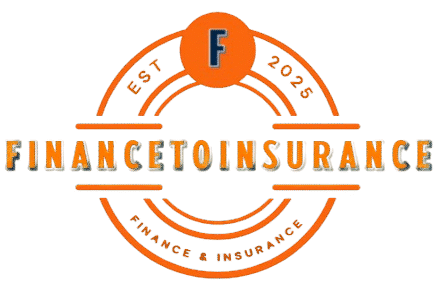When planning for the future, many people consider life insurance as a crucial part of financial security. Among various types, whole life insurance stands out as a comprehensive option that offers lifelong coverage and a built-in savings component. Unlike term insurance, which expires after a set number of years, whole life insurance provides peace of mind that your beneficiaries will receive a death benefit no matter when you pass away.
This article explores everything you need to know about whole life insurance—how it works, its benefits and drawbacks, who should consider it, and how it compares to other forms of permanent life insurance. Whether you’re exploring life insurance options for the first time or looking to refine your understanding, this guide will help you make informed decisions.
What Is Whole Life Insurance?
Whole life insurance is a type of permanent life insurance that remains active for the insured’s entire lifetime, provided that premiums are paid. It not only offers a guaranteed death benefit to beneficiaries but also includes a cash value component that grows over time.
Unlike term life insurance, which only provides coverage for a specific period (10, 20, or 30 years), whole life insurance never expires. This makes it an appealing option for people who want lifetime coverage and a financial product that builds value.
Key Features of Whole Life Insurance
1. Lifetime Coverage
The most prominent feature of whole life insurance is the lifetime protection it offers. As long as premiums are paid, your policy remains in effect, and your loved ones are guaranteed a death benefit.
2. Fixed Premiums
Your premium remains the same throughout the life of the policy. This predictability can be an advantage, especially as you get older and other expenses may rise.
3. Cash Value Accumulation
A portion of your premium goes into a cash value account, which grows at a guaranteed rate set by the insurance company. This component can be borrowed against, withdrawn, or used to pay premiums.
4. Guaranteed Death Benefit
The life insurance policy promises to pay a predetermined amount to your beneficiaries upon your death, making it a reliable source of financial protection.
5. Dividends
Many whole life policies from mutual insurance companies pay dividends. While not guaranteed, these dividends can be taken as cash, used to reduce premiums, buy additional coverage, or left to accumulate interest.
How Whole Life Insurance Works
When you purchase a whole life policy, you agree to pay regular premiums (monthly, quarterly, or annually). These premiums cover:
- The cost of insurance
- Administrative fees
- Contribution to the policy’s cash value
Over time, the cash value grows tax-deferred. You can use it in several ways:
- Take a policy loan (not taxable as long as the policy remains active)
- Make a partial withdrawal (this may reduce your death benefit)
- Surrender the policy for its cash surrender value
Upon your death, your beneficiaries receive the death benefit, typically income-tax-free.
Benefits of Whole Life Insurance
1. Guaranteed Lifetime Protection
Whole life insurance never expires as long as premiums are paid, providing lifelong peace of mind.
2. Builds Wealth Over Time
The cash value grows steadily over time and can serve as a source of emergency funds, retirement supplement, or collateral for loans.
3. Stable Premiums
With fixed premiums, budgeting becomes easier, and you avoid premium increases that may come with age or health changes.
4. Estate Planning Tool
Whole life insurance is often used in estate planning to pass on wealth, cover estate taxes, or fund trusts.
5. Dividends (for Participating Policies)
You may receive annual dividends from the insurer, enhancing your policy’s value.

Drawbacks of Whole Life Insurance
1. Higher Premiums
Compared to term life, whole life insurance can be significantly more expensive, making it unaffordable for some individuals.
2. Slow Cash Value Growth
In the early years, the cash value accumulates slowly. It takes time before it becomes substantial.
3. Limited Investment Control
Unlike variable life insurance, you don’t control how your cash value is invested.
4. Complexity
Whole life policies can be more complex than term policies, making it harder for consumers to fully understand.
Whole Life vs. Term Life Insurance
| Feature | Whole Life Insurance | Term Life Insurance |
|---|---|---|
| Coverage Duration | Lifetime | Specified term (10–30 yrs) |
| Premiums | Higher but fixed | Lower initially, can rise |
| Cash Value | Yes | No |
| Death Benefit | Guaranteed | Guaranteed only during term |
| Cost Over Time | More expensive | Less expensive early on |
| Investment Component | Yes | No |
Conclusion: Term life insurance is suitable for temporary needs (e.g., mortgage, children’s education), while whole life insurance is ideal for long-term protection and savings.
Who Should Buy Whole Life Insurance?
Whole life insurance isn’t for everyone. It is most beneficial for:
1. High-Income Individuals
People with high incomes who max out other tax-advantaged retirement accounts may use whole life to build tax-deferred savings.
2. Estate Planners
Those with significant estates may use the death benefit to cover estate taxes or pass wealth to heirs tax-efficiently.
3. Business Owners
Business succession planning can be supported by life insurance, helping fund buy-sell agreements or key-person coverage.
4. Parents/Grandparents
Whole life can be used to create a legacy for children or grandchildren.
5. People Seeking Lifetime Security
Anyone wanting a lifelong life insurance policy with stable premiums and savings growth may find whole life appealing.
Using the Cash Value
1. Policy Loans
You can borrow against the cash value at competitive interest rates. This doesn’t reduce the death benefit unless the loan isn’t repaid.
2. Withdrawals
You can withdraw part of the cash value. However, this may reduce the death benefit and affect dividends.
3. Surrender
You may surrender the policy entirely for its cash surrender value, ending the coverage.
4. Premium Payments
If the cash value is large enough, it can be used to cover premiums, making the policy “paid-up.”
Tax Advantages
Whole life insurance offers several tax benefits:
- Tax-deferred growth: The cash value grows without immediate taxation.
- Tax-free death benefit: Beneficiaries typically don’t pay taxes on the payout.
- Loan proceeds not taxed: Loans against cash value are not taxable, as long as the policy remains in force.
Choosing the Right Whole Life Insurance Policy
When shopping for whole life insurance, consider the following:
1. Reputation of Insurer
Choose a financially strong company with a long history of stability and customer satisfaction.
2. Policy Type
Check whether the policy is participating (pays dividends) or non-participating.
3. Cost
Compare premium rates, riders, and fees.
4. Flexibility
Look for policies with flexible premium payment options and good loan terms.
5. Riders
Optional features like accidental death, waiver of premium, and long-term care can enhance your coverage.

Common Myths About Whole Life Insurance
Myth 1: It’s Too Expensive for Most People
While it’s true that premiums are higher than term insurance, the cash value and lifetime coverage can justify the cost for many.
Myth 2: You Don’t Need Life Insurance in Retirement
Even in retirement, a life insurance policy can cover final expenses, support dependents, or provide tax-free income.
Myth 3: It’s Only for the Wealthy
Whole life policies come in various sizes, and many middle-income families use them for stability and savings.
Alternatives to Whole Life Insurance
If you’re not sure whole life insurance is right for you, consider these options:
1. Term Life Insurance
Lower premiums; ideal for temporary needs.
2. Universal Life Insurance
Flexible premiums and death benefit with a cash value component.
3. Variable Life Insurance
Allows you to invest your cash value, offering more growth potential but also more risk.
Frequently Asked Questions (FAQs)
1. Can I get whole life insurance without a medical exam?
Yes, some insurers offer no-exam policies, but they may have higher premiums or lower coverage limits.
2. What happens if I miss a payment?
Most policies offer a grace period. After that, the insurer may deduct premiums from the cash value or lapse the policy.
3. Can I convert term life to whole life?
Many term policies offer a conversion option to permanent life insurance without additional medical exams.
4. Is the cash value guaranteed?
Yes, the growth is guaranteed at a minimum rate, and some policies offer additional dividends.
5. What’s the surrender value of a policy?
This is the amount you receive if you cancel the policy, based on your accumulated cash value minus any fees or loans.
Conclusion
Whole life insurance is more than just a safety net—it’s a powerful financial tool that provides lifetime protection, builds savings, and creates a legacy for loved ones. While it comes with higher costs and complexity compared to term life insurance, the benefits—stable premiums, guaranteed coverage, and cash value growth—make it a valuable asset for long-term planners.
Whether you’re thinking about your family’s future, planning your estate, or looking for ways to diversify your retirement savings, whole life insurance deserves careful consideration. Consult with a financial advisor to explore the best options for your unique situation and make an informed decision that aligns with your financial goals.



